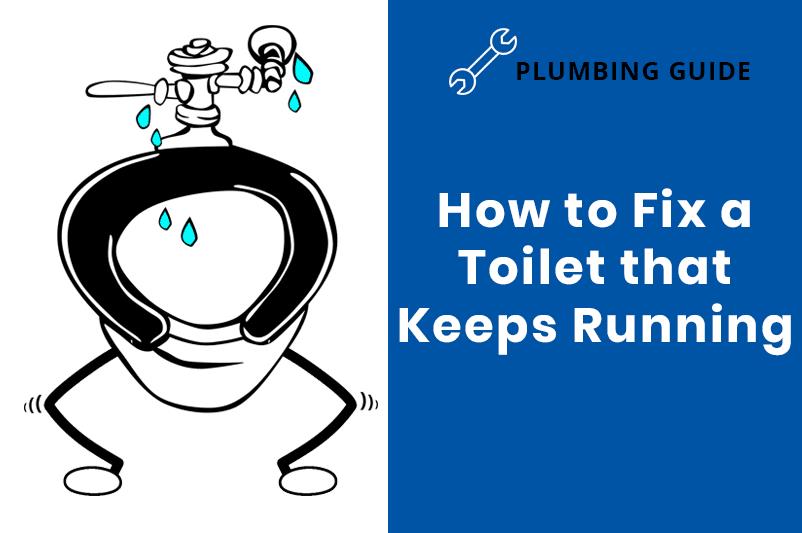
It's easy to get worried if your toilet keeps running after being flushed; a toilet may not be glamorous but it's one of the most important features in any home. Nobody wants to be left without a toilet but a running toilet will usually only be indicative of a minor issue that can be easily fixed. You should be able to fix most basic toilet issues with minimal fuss, meaning you won't have to wait for a plumber, but if you aren't comfortable it might be best to contact a professional. If you're prepared to
One of the most common causes of a running toilet and, fortunately, one of the easiest to fix. It's possible that the lever or button on your toilet is jammed or broken, causing the toilet to continually flush and refill. Wiggling the flush lever might be enough to resolve this issue, or an application of lubricant might help an old mechanism regain its smooth action. If a button flush has lost its spring, you might need to replace the entire button mechanism. Either of these should be easy enough to replace, as long as you have the proper tools.
Toilets are relatively simple devices; their basic technology has not changed much over the past hundred years or so. Removing the top of your cistern will allow you to see the internal mechanisms of your toilet, including the flush. If you flush the toilet while these components are visible, it should be apparent whether or not they are functioning properly or something is jamming the moving parts.
The water level inside your cistern should be no higher than the end of your overflow tube, which is intended to keep water at an appropriate level. If your water level is higher than your overflow, it's possible that your ballcock might not be operating properly. The ballcock's purpose is to rise as your cistern fills with water, closing the supply into the cistern once it reaches a certain level. Check that your ballcock can rise and lower without obstruction by manually operating it, as this is one of the most common causes of water flow issues and one that is easily fixed. If the running water stops when you manually close the ballcock, it is the cause of your issue. Despite being a relatively simple device, ballcocks require adjustment to ensure they rise to the proper level or maybe even replacement if years of repeated use have broken it. On the other hand, your water level being too low might indicate that your water valve hasn't been opened properly, meaning it takes longer than intended for the cistern to fill. If your valve is open too far, it might be allowing too much water into your cistern, which will then force its way into your toilet bowl, giving the impression that it is running constantly.
The flush mechanism is connected to a “flapper”, which controls the flow of water from the cistern into the bowl. The flapper should open to allow the cistern to empty and flush the toilet, then close to stop the flow and allow the cistern to refill. The flush handle is usually attached to the flapper by a chain, which needs to be the correct length in order for the flapper to open and close properly. Check to see whether or not the chain is tangled or wrapped around something; this should be quick and easy to fix with your hands. Give your toilet a test flush to ensure it's working properly. If you need to replace the flapper, shut off the water supply as described below and then flush the toilet to drain it before following the instructions and installing the new flapper.
If these simple fixes don't work and your toilet keeps running, you should shut off the toilet's water supply, whether you want to perform any repairs yourself or just to save water. There should be an isolation valve on the pipe that supplies the toilet; this can be shut off, either with a screwdriver or the valve handle, if one is present.
If the simple fixes such as checking or replacing your ballcock and flapper don't work, it might be best to call a professional, especially if it seems as though the problem is severe. While it can be tempting to perform repairs yourself, if you aren't confident in your plumbing ability you might make the problem worse. A running toilet is an annoyance and might waste some water but the impact on your home will be far worse if botched repairs cause a full water leak. If you want to protect your property from damage, a professional plumber should be able to fix the majority of faults with your toilet quickly, or obtain whichever parts you need for him to repair damage. If your plumber recommends a replacement you can find a full range of toilets for all homes on our website.